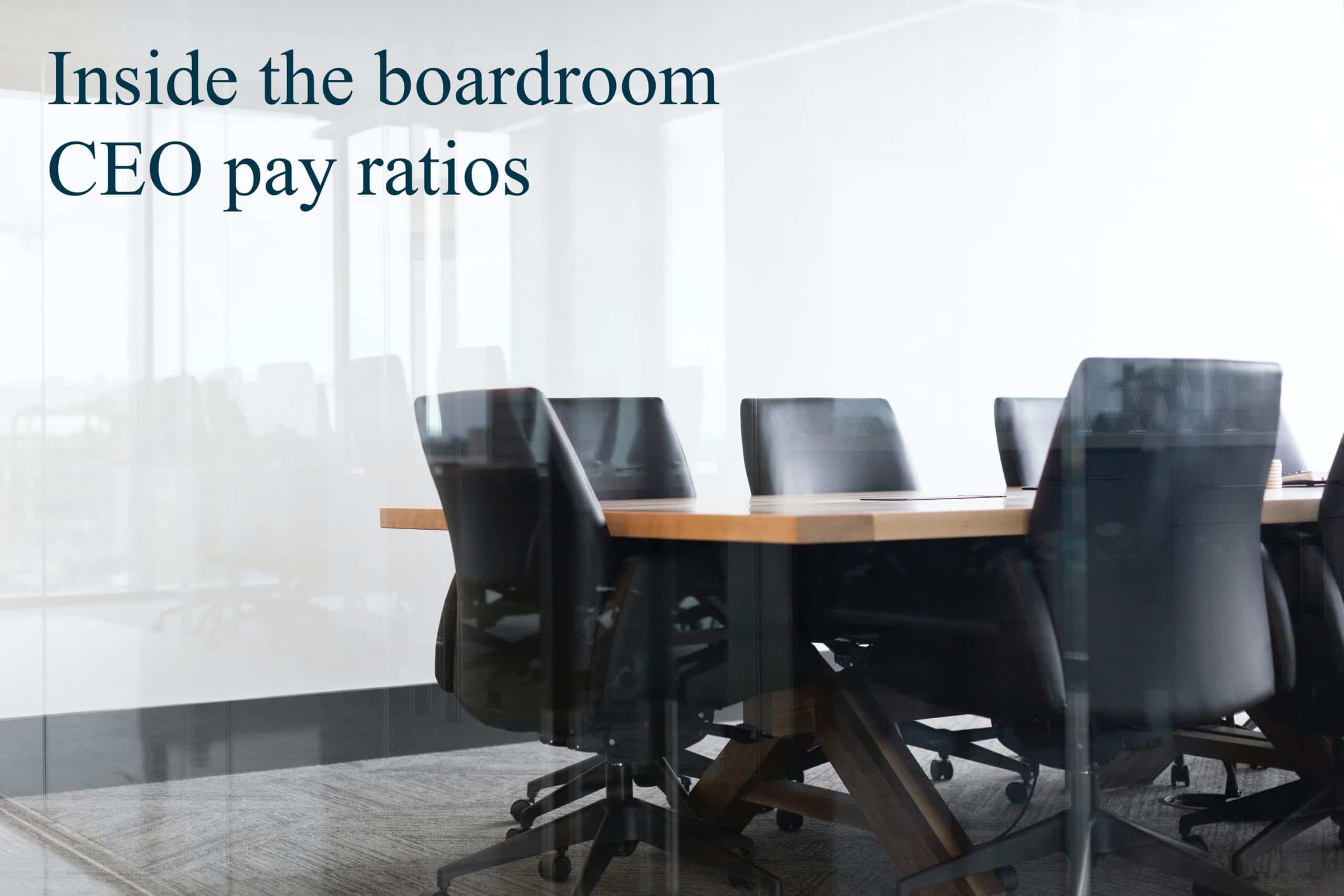Know
Inside the Boardroom: CEO pay ratios

The median workers at the largest publicly traded companies headquartered in the Tampa-St. Petersburg area got an average boost of about $3,500 in annual pay in 2019.
CEOs at the same companies saw their total pay packages increase $1.3 million on average.
Nationally and locally, there’s a growing gap between CEO compensation and worker pay, and it’s highlighted in the CEO pay ratio that most public companies are now required to disclose in their annual proxy statements to shareholders.
The St. Pete Catalyst is publishing a series of reports this week taking a close look at CEO pay — often considered a benchmark for corporate performance — along with board compensation and diversity at the largest publicly traded companies headquartered in the Tampa-St Petersburg area. We’re also including Publix Super Markets, which reports its financial information although its stock but does not trade publicly; all the stock is owned by employees and directors.
This is the third year companies have to disclose the pay ratio, which compares a CEO’s total compensation with that of the median worker at the same company.
For local companies, the ratio varied widely, based on pay figures for 2019.
The lowest ratio – and the smallest pay gap – was at United Insurance Holdings (Nasdaq: UIHC), a property and casualty insurance company headquartered in St. Petersburg, where CEO John Forney made $39 for every $1 made by the median worker.
The biggest gap was Jabil (NYSE: JBL), a St. Petersburg-based manufacturing solutions firm. CEO Mark Mondello made $1,605 for every $1 made by the median worker. Most of Jabil’s workforce is overseas. Jabil said in its proxy that it annually conducts competitive market pay analysis in every country in which it operates, to ensure it is competitive with local market practices.
 The pay ratio is controversial. Proponents say it provides more transparency, and critics argue it is misleading because there are multiple ways to determine the “median” employee.
The pay ratio is controversial. Proponents say it provides more transparency, and critics argue it is misleading because there are multiple ways to determine the “median” employee.
In what may be a signal of how sensitive the topic is, several local companies offered different ways to think about their CEO pay ratios.
Like Jabil, Superior Group of Companies (Nasdaq: SGC) has a lot of overseas workers, so the Seminole-based manufacturer provided two CEO pay ratios for 2019. CEO Michael Benstock made $198 for every $1 made by the median worker when the entire workforce of 3,251 people was included. But when the company only counted its 788 workers based in the United States, the CEO pay ratio dropped to 52 to 1.
Publix Super Markets also calculated two CEO pay ratios — one ratio including full-time, part-time and seasonal workers and a second ratio including only full-time workers. CEO Randall Jones made $124 for every $1 made by the median worker when the entire workforce was included, but that dropped to 64 to 1 when only the full-time workers were counted.
At Kforce (Nasdaq: KFRC), a staffing company in Tampa, CEO David Dunkel made 186 times that of the median employee in 2019. But the Kforce proxy said that its consultants work on temporary assignments of different types and durations. Since these employees are considered temporary, the company did not annualize their compensation. Most of the employees it counted in determining the median employee did not have a full year of compensation due to the short-term nature of their assignments, the proxy said.
Bloomin’ Brands (Nasdaq: BLMN), the Tampa-based restaurant company that operates Outback Steakhouse and other casual dining brands, had a turnover in CEOs during the middle of 2019. David Deno stepped into the role on April 1, 2019 and received a one-time, $5 million stock award that the company was required to include when calculating the pay ratio, the proxy said. Had Deno served as CEO for the full year, and absent the one-time award for 2019, the ratio would have dropped from 558 to 1 to 410 to 1.
Benefytt Technologies (Nasdaq: BFYT), a Tampa insuretech, made a similar point, saying that CEO Gavin Southwell received restricted shares in his 2019 compensation package that cover a five-year grant period. The company was required to count the value of all of those shares in calculating Southwell’s 2019 pay, which made the 2019 CEO pay ratio 183 to 1. That drops to a 65 to 1 ratio if only the first year of the five-year stock grant is counted, the Benefytt proxy said.
Smaller companies are not required to report the CEO pay ratio. This was the first year that Benefytt Technologies, which recently changed its name from Health Insurance Innovations, did so. It also was the first report from Heritage Insurance Holdings (NYSE: HRTG), a Clearwater property and casualty insurer, where CEO Bruce Lucas made $90 for every $1 made by the median employee.
Apyx Medical (Nasdaq: APYX), a Clearwater medical device firm, has not disclosed a CEO pay ratio for 2019. Neither has Overseas Shipholding (NYSE: OSG), a Tampa-based oil and petroleum transportation company.
As of May 11, Tech Data (Nasdaq: TECD), a Clearwater-based IT distributor and the largest public company headquartered in the area, had not filed a proxy disclosing executive pay for its most recent fiscal year, which ended Jan. 31. Tech Data is going private in a $6 billion buyout by funds associated with Apollo Global Management, in a deal expected to close by the end of June. According to Tech Data’s most recent proxy, filed a year ago, CEO Rich Hume’s total compensation was $4.8 million and the CEO pay ratio was 93 to 1.
Corporate boards of directors determine CEO pay, usually spelling out in detail the performance metrics they use to calculate that compensation. But boards are often less candid about how they determine their own pay. More about that in tomorrow’s report.






Mike Manning
May 12, 2020at3:38 pm
I hope this series receives the attention it deserves. I’m finding that the series reveals the serious and expanding wealth gap issue. So far, I see plenty of room to raise median pay.
Karl Nurse
May 12, 2020at3:33 pm
If we were to compare this to Germany, the CEO pay may be as much as 10 times as large. This huge gap makes the tension between the 99% and the 1% much worse. Successful CEO’s should be handsomely rewarded for their work. However, the US companies often go far beyond any other country in the world. Eventually, I believe we will pay a price for this.